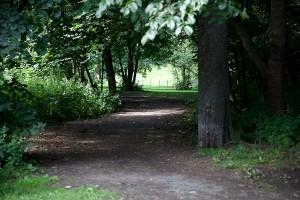 Not yet a month into the semester, my students and I move cautiously around one another like two parties in an arranged marriage, still unsure of what kindnesses or cruelties the other is capable.
Not yet a month into the semester, my students and I move cautiously around one another like two parties in an arranged marriage, still unsure of what kindnesses or cruelties the other is capable.
They are in remedial English and suspect they are not natural writers; I am a novice instructor and suspect I am not a natural teacher. Secretly we each hope the other will prove us wrong.
I leave my house in the morning two hours before the first class meets. I walk half a mile to the bus depot and wait for my ride to the train station, where I sit for half an hour before spending twenty minutes on the train. When I get off the train I have another twenty-minute walk to our classroom where I arrange the tables, open the blinds, and pick any stray pieces of paper off the floor.
By the time they arrive, I’ve been traveling toward them for a long time.
When they walk in, some look as though they rolled out of bed fifteen minutes before. Others look like they had to wake up for six o’clock sports practice. That is, they all look tired, and I suspect they would rather have their teeth cleaned than listen to me talk about comma splices.
I do what I always do when I am nervous: I make jokes. They, however, do not laugh. I decide there are several options for why this is so. One: it is too early in the morning for laughter. Two: they aren’t sure whether I am joking. Three: they have terrible senses of humor. I dismiss all other possibilities, such as that my jokes aren’t funny. I know I’m funny—my comma splice jokes kill at all the English major parties.
But the students are warm, and sweet, and generous with another. This is a private Christian school, wooded and safe. My walk from the train station to our class follows a narrow paved path that winds behind campus, around the campus garden and greenhouse, between two ponds clogged with lily pads, and over a wooden bridge that spans a creek. It is so quiet that more than once I have heard and then spotted, a squirrel gnawing an acorn.
On a recent Friday, completing this walk, I had an idea: I would postpone the lesson I had planned for the day (a grammar quiz), and take the students as a group on this trail. I’d sell it as an observational exercise, and require them to write down ten things they noticed while walking. I’d tell them “sky” and “grass” didn’t count. I’d tell them to look closer.
I wondered whether they would grumble and consider this a waste of time, but when they heard we were going outside they were instantly rejuvenated, like third graders. At first they all hung a few feet behind me on the path, chattering. But when I told them we were walking on the trail they’d need to take if they wanted to ride the train, they were interested.
“Do you take the train here every day?” they asked. “Do you really walk all this way?” “Do you live in the city?”
“I do,” I told them, and this impressed them.
I pointed out some things I noticed as we walked. “Look at this row of flowers,” I said, “they are always covered in honeybees. Bees love them! I wonder if the landscapers knew that before they planted them.”
“Sometimes gardeners plant flowers that attract bees on purpose so other plants in the area will be pollinated,” one girl told me. It was one of the first times I heard her speak.
We saw turquoise berries, a goose, three turtles in the pond, and my favorite part of the walk: A row of trees that had grown around an iron fence, looking as though they’d been impaled. There were three light stripes on their trunks that looked like scarring, but the fence went straight through the middle of them.
“How did it happen?” one student asked, as they all gathered around. Several pulled out their cell phones and snapped photos.
On the walk back I was glad we took this day just to walk, if it meant getting to know one another a little better. I didn’t plan to read through all their lists: I would use them to take attendance.
When I started reading though, I couldn’t stop. I figured they had simply noticed a few things, but I was wrong. Three students noticed a single brick built into a stone-wall. One described the tightly furled fronds on a ground fern. A Korean student wrote the word for “milk thistle” in her native language because she did not know the name in English.
One list was exactly ten sentences, each beginning with “I see.”
I see ripe tomatoes growing in a garden.
I see a tree that looks like a half body doing a handstand.
I see bees harvesting on flowers.
I see a peacefully stream.
I see a fence going through a tree. I am not sure how it was possible.
If I had asked them, before we left, whether they thought they would see anything on the walk they hadn’t previously thought possible, what would they have said? What would I have said? We would have said no.
But there we were, proving one another wrong. And, I hope, not for the last time.














